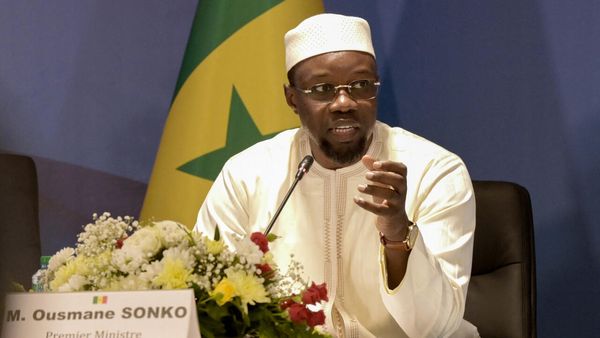Ancient Greek philosopher Plato once said, “The greatest wealth is to live content with little.”
But economics doesn't typically work like that. In the words of renowned British economist Charles Robbins, "Humans want what they can't have."
Abundance and scarcity are two sides of the same coin. Societies typically deal with scarcity by increasing supply.
And if there's one thing that's dominated news headlines when it comes to scarcity its chips or semiconductors.
Makers of semiconductors or chip manufacturers have been grappling with the impact of global supply chain shortages that have led to a dearth of chips that are used in everything from cars to home appliances for nearly two years.
The looming crisis first started when Washington put sanctions on China’s biggest telecoms equipment maker, Huawei Technologies Huawei, amid spying allegations that the Chinese company has constantly denied.
During the pandemic, factory closures further hurt this sector, because demand for chips continued to rise for both remote work and entertainment.
Everyone from automakers like Ford (F) and General Motors (GM), one of the hardest-hit sectors due to these chip shortages to tech companies like Apple (AAPL), which has started producing its own chips, to semiconductor giants; are trying to find ways around this conundrum.
And Nvidia (NVDA) the largest chip company in America by market value is open to exploring a deal with rival chipmaker Intel (INTC) as it seeks to expand and diversify its supply base.
Can Intel Integrate its Supply Chain With Nvidia?
Nvidia's ambitions are to replicate the success that Asia's chip giant Taiwan Semiconductor Manufacturing Co (TSMC) enjoys.
And the company said it is sophisticated and mature enough to realize that "we have to collaborate."
"They're interested in us using their foundries. We're very interested in exploring it, and being a foundry at the caliber of a TSMC, it is not for the faint of heart," said Nvidia Chief Executive Jensen Huang during a recent company event.
"I'm encouraged by the work that is done at Intel. I think that this is a direction they have to go and we're interested in looking at the process technology," Huang said.
Huang added that these discussions with Intel could take a while to conclude and added that its partnerships with TSMC and South Korean tech giant Samsung in particular took years to cultivate.
"With respect to Intel, Foundry discussions take a long time. And it's not just about desire, but we have to align technology. The business models have to be aligned. The capacity has to be aligned. The operations process and the nature of the two companies have to be aligned. It takes a fair amount of time, and it takes a lot of deep, deep discussion. We're not buying milk here. This is really about integration of supply chains. And so we are very open-minded to considering Intel. And I'm delighted by the efforts that they're making," he added.
Intel already helps Nvidia in its supercomputing business.
"We've diversified the number of nodes, we've diversified the number of foundries, and Intel is an excellent partner of ours. Their CPUs [central processing unit], we qualify their CPUs for all of our accelerated computing platforms. When we pioneer new systems like we just did with Omniverse computer, we partnered with them to build the first generation of the Omniverse computers, our engineers worked very closely together," said Huang.
Nvidia refers to "Omniverse" as its version of the metaverse and is making huge bets on artificial intelligence alliances, the company recently shared on its investor day.
"So, I think our relationship with Intel is quite long. We work with them across a whole lot of different areas. Every single laptop, every single PC, every single server, every single supercomputer we collaborate. Let's see on the software stack," Huang added.
Admittedly, Nvidia wants to expand its supply base for manufacturing chips.
"Our strategy is to expand our supply base with diversity and redundancy at every single layer, at the chip layer, at the substrate layer, at the assembly layer, at the system layer, at every single layer," he added.
The company said it enjoys working with partners that include bigwigs like Marvell Tech (MRVL) Broadcom (AVGO) and Advanced Micro Devices (AMD).
"We try to take the not paranoid approach when we work with partners, and we try to rely on them, let them know we're relying on them, trust them, let them know that we trust them, and so far, it's served as well."

Shutterstock
Chip Making is a Costly Affair
Chip-making is a costly proposition. Even more so when chips are in short supply.
Nvidia engages in the design and manufacture of computer graphics processors, chipsets, and related multimedia software.
The chip-making colossus Nvidia reported capital expenditure of $976 million towards property, plant, and equipment for the last twelve months ending January 30, 2022, according to data from FactSet.
At the peak of the coronavirus pandemic, Nvidia's capital expenditure jumped 130.7% and more than doubled to $1.12 billion for FY 2021 ended in January. For FY2020, this number was $489 million FactSet data shows.
TSMC's capital expenditures for 2021 totaled a massive "$30 billion—up 66% from the previous year and nearly triple the company’s average over the previous five," according to FactSet data cited by The Wall Street Journal.







